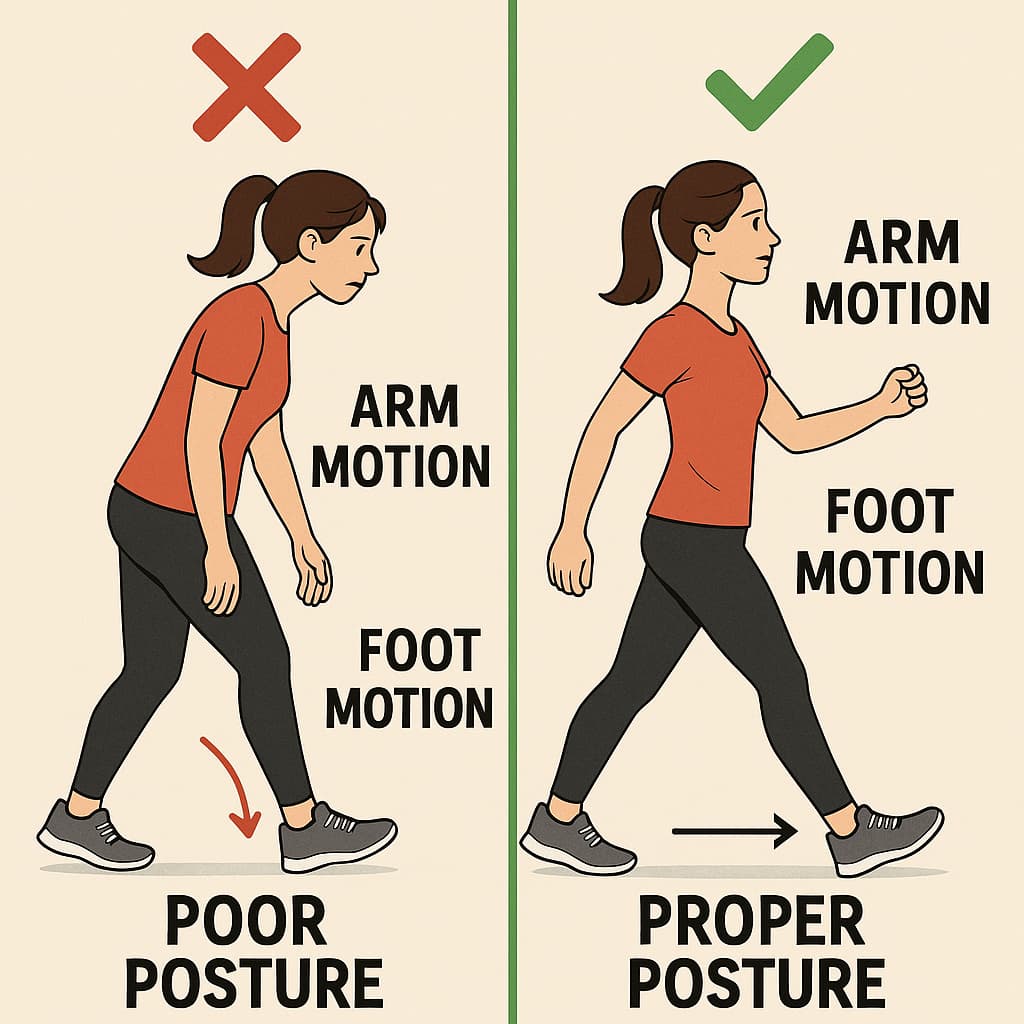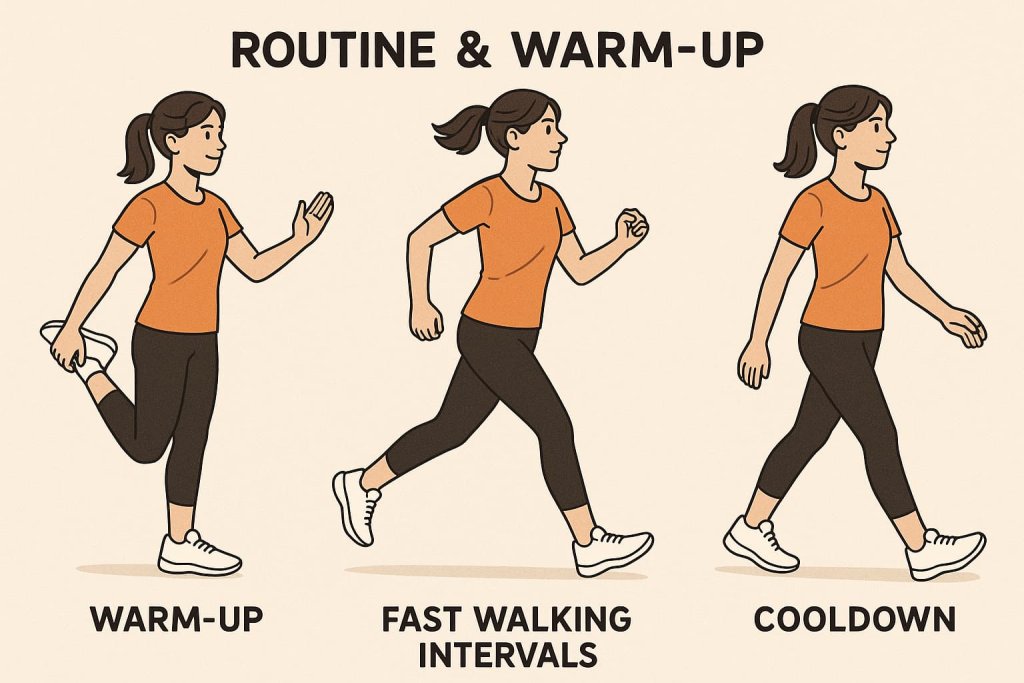Power walking technique means walking briskly with correct form to maximize calorie burn, boost cardiovascular fitness, and protect your joints—all without running. Adopting the right technique immediately makes walking more effective and safer. Power walking is easy to start, but understanding the key steps—from posture to arm swing—ensures you get all the benefits.

Knowing proper power walking technique matters because it:
- Increases calorie burn and aerobic fitness
- Reduces injury risk
- Improves posture and muscle tone
This article covers everything you need to know, including step-by-step technique, common mistakes, health benefits, routines, safety, and expert-backed tips—plus authoritative external resources for further learning.
What Is Power Walking? (Power Walking Technique Explained)

Power walking is walking at a fast pace—usually 4–5.5 mph—while maintaining good form and keeping one foot on the ground at all times. It’s faster and more purposeful than regular walking but lower-impact than jogging. The key difference is technique: posture, stride, and arm movement all matter.
According to the American Council on Exercise, power walking burns up to 50% more calories than ordinary walking. It’s also shown to lower blood pressure, improve cholesterol, and support weight loss (CDC, 2024).
Common Power Walking Mistakes to Avoid

- Overstriding: Causes joint strain. Keep steps quick and short.
- Poor posture: Avoid slumping or looking at your feet.
- No arm swing: Your arms should help drive your pace.
- Too much phone use: Focus on your walk for best results.
For more tips, see Verywell Fit’s Power Walking Guide.
Step-by-Step Power Walking Technique
1. Posture: Stand Tall and Aligned
- Keep your head up, eyes looking forward (not down).
- Shoulders relaxed, not hunched.
- Back straight, chest lifted.
- Pull your belly button in slightly to engage your core.
Good posture keeps your breathing open and prevents lower back pain.
(Mayo Clinic Walking Form Guide (2024))
2. Arm Motion: Power from the Upper Body
- Bend elbows at 90 degrees.
- Swing arms forward and back (not across your body).
- Hands relaxed, not clenched.
- Your arms should help drive your pace—move briskly but smoothly.
3. Foot Strike: Heel-to-Toe for Efficiency
- Land on your heel first, roll through the step, and push off with your toes.
- Don’t overstride—take quick, short steps rather than long, slow ones.
4. Cadence & Speed: Find Your Rhythm
- Aim for 120–140 steps per minute (about 4–5.5 mph).
- Breathe deeply, in through your nose and out through your mouth.
- You should be able to talk, but not sing, while walking.
5. Engaging the Core
- Gently tighten your abdominal muscles as you walk.
- This protects your back and helps stabilize your hips.
Watch out for these mistakes:
- Leaning forward or slumping
- Locking your knees
- Overstriding or taking steps that are too long
- Letting arms swing across your body
Sample Power Walking Routine for Beginners

- Warm-Up (5 minutes): Easy walk, gradually increasing speed.
- Main Set (20–30 minutes): Walk briskly, focusing on technique (see above). Mix in 1-minute intervals at max pace every 5 minutes for extra calorie burn.
- Cool Down (5 minutes): Slow walk, then stretch calves, hamstrings, quads, and hips.
Tip: Start with 10–15 minutes if you’re new, and add 5 minutes each week as you build fitness.
Power Walking Benefits (Backed by Latest Data)
- Burns 200–300+ calories/hour (at 4–5 mph for a 150-lb person)
- Reduces risk of heart disease, stroke, and type 2 diabetes (CDC, 2024)
- Improves balance and muscle tone in the legs, core, and upper body
- Enhances mood and cognitive function (exercise-induced endorphins)
- Low injury risk compared to running
A 2025 study published in the British Journal of Sports Medicine found that brisk/power walking is linked with a 25% lower risk of early death compared to slow walking.
Safety & Progression Tips
- Wear flexible, cushioned walking shoes with good arch support (Harvard Health, 2024).
- Stay hydrated and use sunscreen if outdoors.
- Walk on flat, even surfaces when possible.
- If you have any chronic health conditions, check with your doctor before starting a vigorous walking program.
External Resources & Official References
- CDC Physical Activity Guidelines for Adults
- Mayo Clinic Walking Tips
- ACE Fitness: Power Walking vs. Speed Walking
Conclusion
Power walking is a simple yet powerful way to boost your fitness, lose weight, and protect your joints—without running. Mastering the right technique transforms ordinary walks into a full-body workout. Start slow, focus on posture and form, and progress at your own pace. Ready to take the first step? Lace up your shoes, use these power walking technique tips, and experience the difference today!
